Seoul : Tradition & Culture
Where Tradition Meets Modernity and Art Meets Culture
Line 3
Gyeongbokgung Station
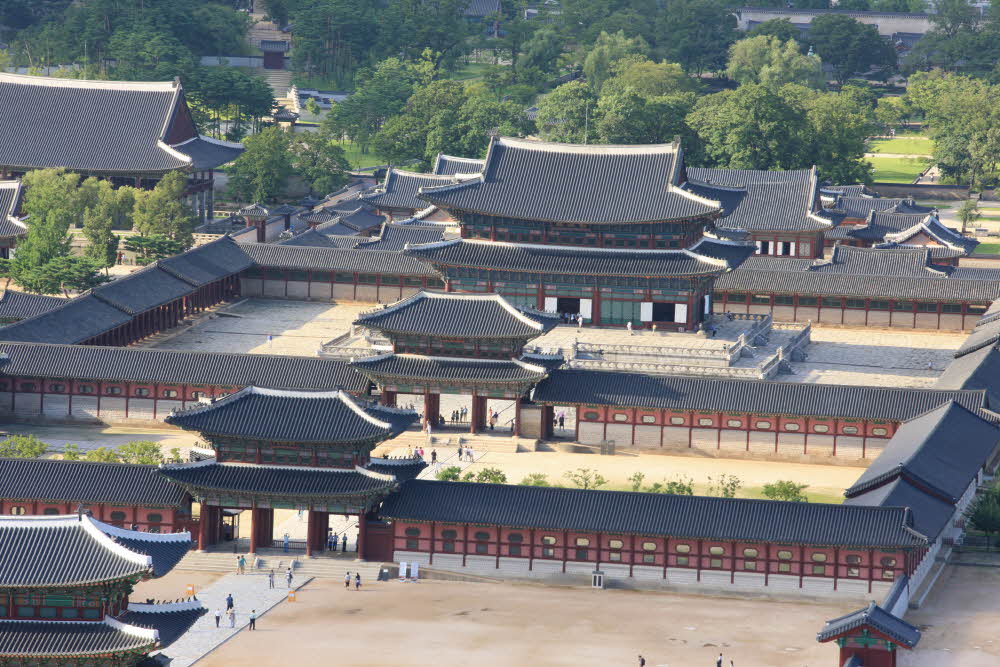
Gyeongbokgung Palace
Exit 5, 250m/4min
Jeong Dojeon, a founding member of the Joseon Dynasty, named the palace to mean “greatly blessed.” As the principal palace of the dynasty, Gyeongbokgung offers beautiful scenery all day long. The palace’s Gyeonghoeru and Hyangwonjeong pavilions are especially beautiful in spring, when cherry blossom trees are in full bloom, and in fall when they are surrounded by fiery red and golden yellow tree leaves. If you wear a hanbok (traditional Korean clothing), admission is free.
- Address:
- 161 Sajik-ro, Jongno-gu, Seoul
- Tel:
- 02-3700-3900
- Website:
- Operation Hours:
- Mar~May, Sept&Oct:
- 09:00~18:00
- June ~ Aug:
- 09:00~18:30
- Nov~Feb:
- 09:00~17:00
- Closed Tuesdays
- Mar~May, Sept&Oct:
- Fee:
- ₩3,000
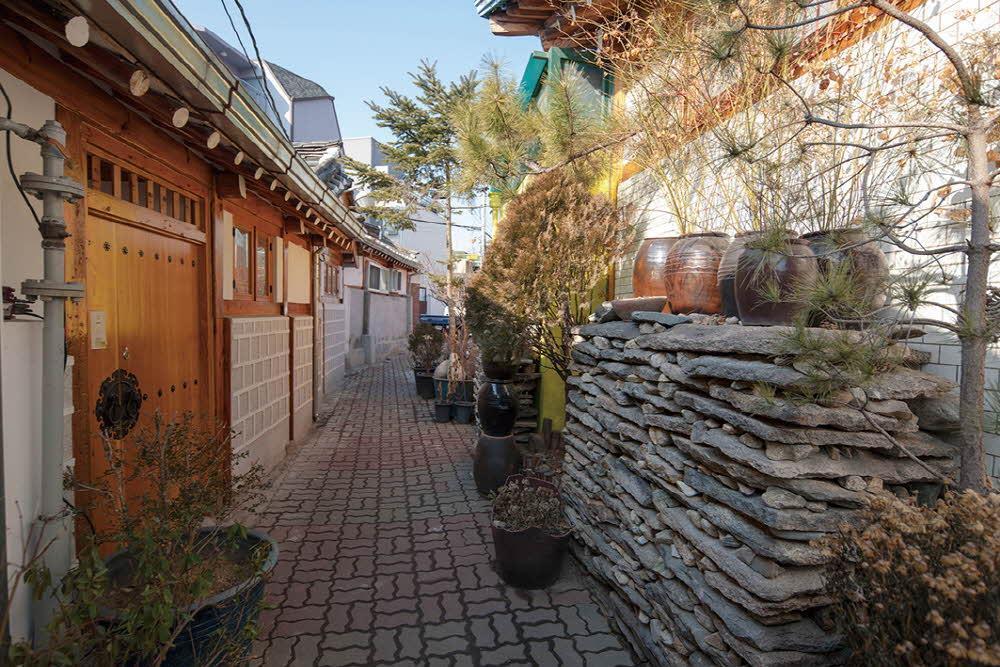
Seochon Village
Exit 3, Village entrance
Today’s Seochon Village was originally called “Sejong Village” because it was where King Sejong the Great, the creator of hangeul (Korean writing system), was born and raised. The cafe that renovated an old bookstore and still uses its original signboard, the 50+ year-old Chinese restaurants, and various other places carry on the village’s history to this very day. The herbal medicine shop where visitors can enjoy a hot cup of tea while checking their physical constitution is very popular among foreign tourists.
- Address:
- Cheongun-dong & Hyoja-dong, Jongno-gu, Seoul
Tongin Tea & Herbal Medicine
- Address:
- 29 Pirun-daero 6-gil, Jongno-gu, Seoul
- Website:
- Tel:
- 02-725-0111
- Operation Hours:
- 10:00~19:00
- Closed Sundays
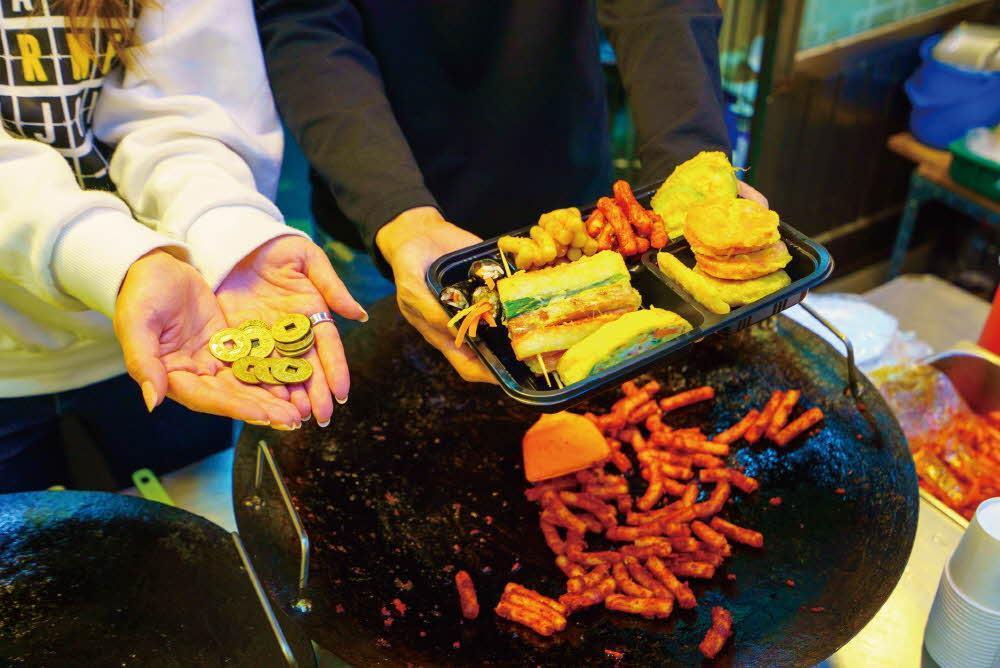
Tip : Tongin Market’s Dosirak Café
Exit 2, Lunchbox Café
Tongin Market’s food tour is an attractive feature of Seochon Village. You have to buy old Korean coins called “yeopjeon” to pay for side dishes to fill your lunch tray. One of the most popular dishes is gireum tteokbokki, or fried spicy rice cakes.
- Address:
- 18 Jahamun-ro 15-gil, Jongno-gu, Seoul
- Weekdays:
- 11:00–16:00
- Weekends&Holidays:
- 11:00~17:00
- Closure Date:
- Mondays
- 3rd Sunday of month.
Line 5
Gwanghwamun Station
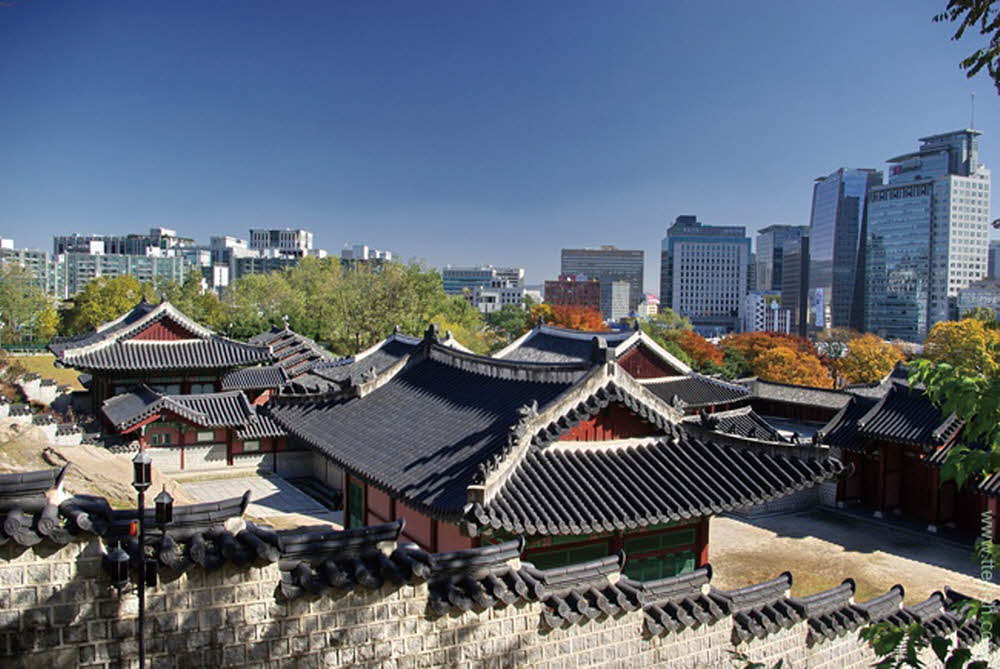
Gyeonghuigung Palace
Exit 8, 580m/9min
Located on the foothills of Inwangsan Mountain, Gyeonghuigung with its unique architectural features, was the secondary palace during the late Joseon period. Towards the back of the palace is a huge rock called “Seonam,” which means “propitious rock,” and the view of the palace from there is exceptionally beautiful.
- Address:
- 55 Saemunan-ro, Jongno-gu, Seoul
- Tel:
- 02-724-0274~6
- Operation Hours:
- 09:00~18:00
- Closed Mondays
- Fee:
- Free
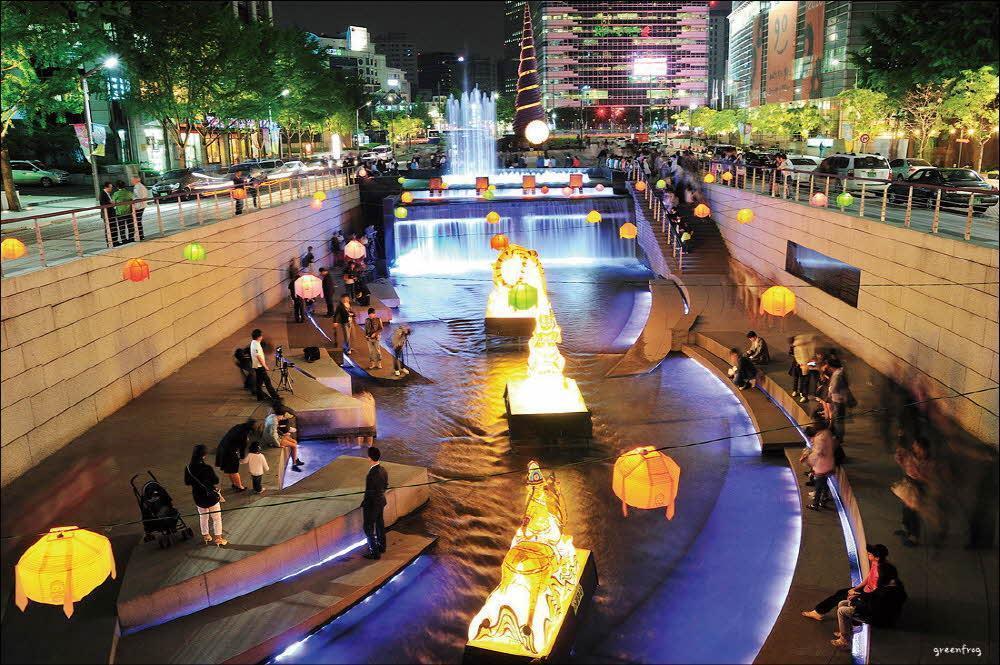
Cheonggyecheon Stream
Exit 5, 140m/2min
Cheonggyecheon flows through downtown Seoul amid a forest of skyscrapers. It serves as a relaxing rest area, and also hosts a great number of festivals and cultural events throughout the year. Unique sections such as the “Proposal Wall” and various street performances attract many tourists.
Cheonggye Plaza
- Address:
- 14 Seorin-dong, Jongno-gu, Seoul
- Tel:
- 02-2290-7111
Line 3
Anguk Station
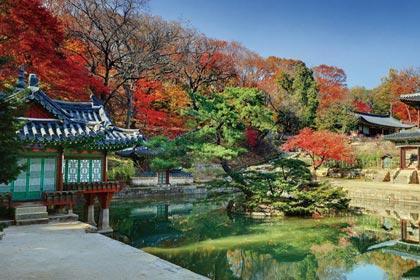
Changdeokgung Palace
Exit 3, 300m/4min
As the best preserved palace of the Joseon Dynasty, the Changdeokgung Palace Complex was declared a UNESCO World Heritage in 1997. One of the most attractive features of it is its Huwon Garden (formerly called “Secret Garden”). Passed the square Buyongji Pond is Bullomun Gate, a stone gate said to bring longevity if walked through.
- Address:
- 99 Yulgok-ro, Jongno-gu, Seoul
- Tel:
- 02-3668-2300
- Website :
- Operation Hours:
- Feb~May, Sept&Oct:
- 09:00~18:00
- June~Aug:
- 09:00~18:30
- Nov~Jan:
- 09:00~17:30
- Closed Mondays
- Feb~May, Sept&Oct:
- Fee:
- ₩3,000
- For information on special tours of Huwon Garden, go to website.
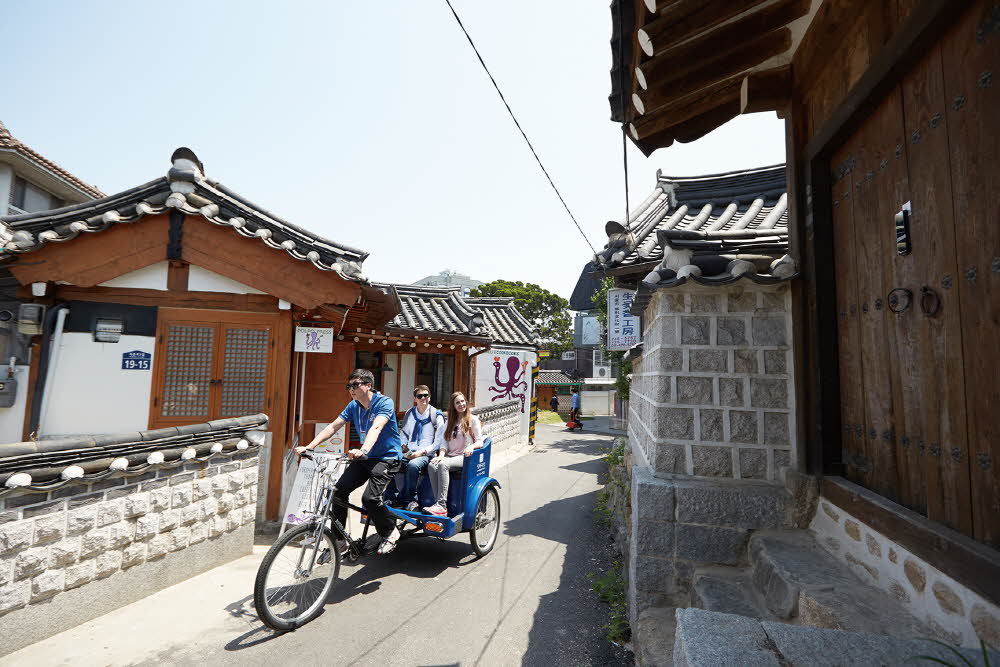
Bukchon Hanok Village
Exit 3, 240m/4min
This was the residential village of government officials and nobility during the Joseon Dynasty, and the traditional homes called “hanok” have been very well-preserved to this day. The 8 Scenic Spots of Bukchon, cultural activities, unique museums and much more attract plenty of tourists to this cozy village. Tourist maps, guidebooks and other information are available at the Bukchon Traditional Culture Center and tourist information centers around the area.
Bukchon Traditional Culture Center
- Address:
- 37 Gyedong-gil, Jongno-gu, Seoul
- Tel:
- 02-2133-1371~2
- Website:

Samcheongdong-gil
Exit 1, 480m/7min
Hanok-style cafes and restaurants with superb views, unique desserts and other aspects of the area make it popular among young and trendy crowds. Samcheong-ro Street is lined with various museums and galleries including the National Museum of Modern and Contemporary Art, and Gallery Arario Seoul. Palpan-gil Alley, which stretches between Cheong Wa Dae (the Blue House) and Samcheongdong, is a newly rising tourist area for its uniqueness.
Galley Arario Seoul
- Address:
- 84 Bukchon-ro 5-gil, Jongno-gu, Seoul
- Tel:
- 02-541-5701
- Website :
- Operation Hours:
- 10:00~19:00
- Closure Date:
- Monday
- Jan 1st
- Seollal & Chuseok Holidays
Insa-dong
Exit 6, 120m/2min
People wearing hanbok (traditional Korean clothing), and kkultarae (honey skein) stands are easily seen in this neighborhood. The unique and traditional arts and crafts at Ssamzigil, the antiques alley, the galleries, traditional tea houses and much more provide plenty to do and see. You can also experience various cultural and traditional activities such as making your very own stamp at Yhlayuen Jeongak Academy, or try bindaetteok (mung bean pancake) with makgeolli (rice wine) in the traditional pubs.
Yhlayuen Jeongak Academy
- Address:
- 34 Insadong-gil (2nd floor #202) Jongno-gu, Seoul
- Website:
Line 1
Jonggak Station
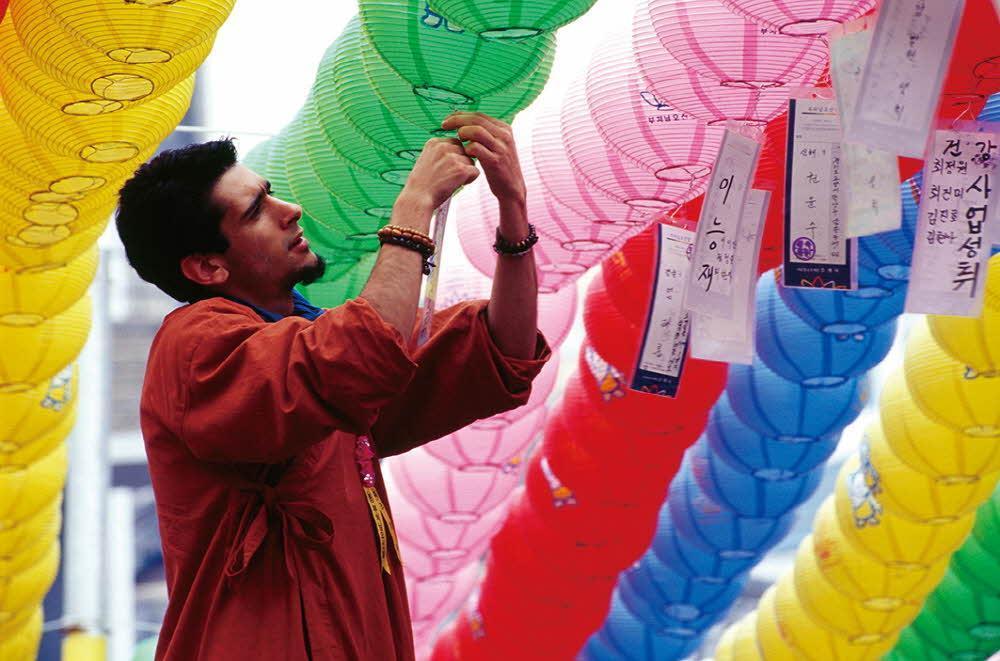
Tip : Jogyesa
Exit 2, 360m/5min
An ancient temple in the middle of downtown Jongno
At Jogyesa Temple you can find serenity while in the center of Seoul. It offers overnight “templestay” programs as well as a one-day programs on Wednesdays where participants can enjoy tea with a monk, experience Seon meditation, make lotus flowers, and more.
- Address:
- 55 Ujeongguk-ro, Jongno-gu, Seoul
- Tel:
- 02-768-8600
- Website:
Line 1,3,5
Jongro 3(sam)-ga Station
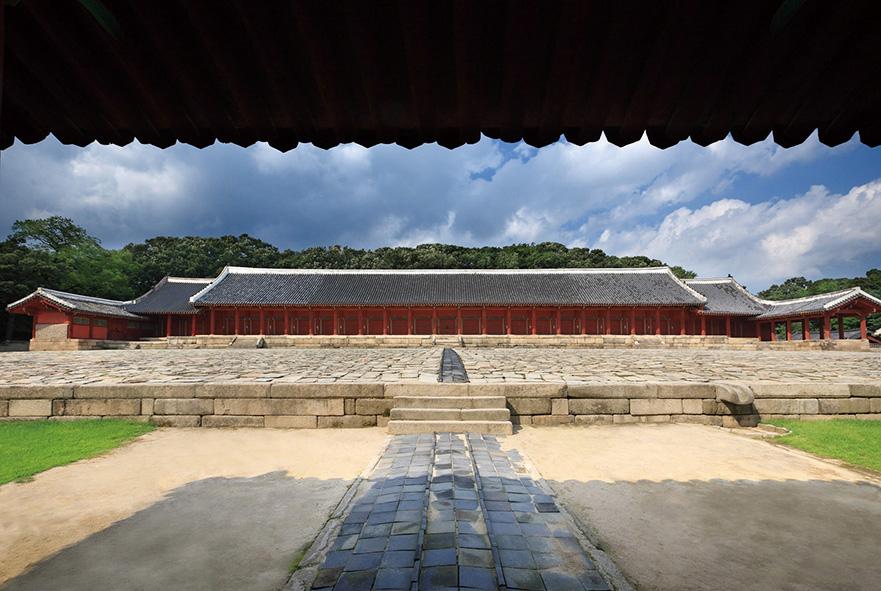
Jongmyo Shrine
Exit 11, 230m/4min
The drums announcing the beginning of the Royal Ancestral Ritual (Jongmyo Jerye), and the music of Chwitadae (Korean traditional marching band) fills the area. Every 1st Sunday of May, a reenactment of the Royal Parade presents a unique scene of the king’s march accompanied by civil and military officials dressed in elaborate and colorful traditional uniforms. Both Jongmyo Shrine and the Ancestral Ritual were acknowledged by UNESCO for their value and importance in preserving the royal court’s ritual formalities.
- Address:
- 157 Jong-ro, Jongno-gu, Seoul
- Tel:
- 02-765-0195
- Website:
- Operation Hours:
- Saturdays & Culture Days (last Wednesday of month)
- Feb~May, Sept&Oct:
- 09:00~18:00
- June~Aug:
- 09:00~18:30
- Nov~Jan:
- 09:00~17:30
- Closure Date:
- Tusedays
- Guide Tours:
- English offered daily (except Saturdays) at 10:00, 12:00, 14:00 & 16:00.
- Japanese and Chinese tours also available.
- Fee:
- ₩1,000
- Free on Culture Days


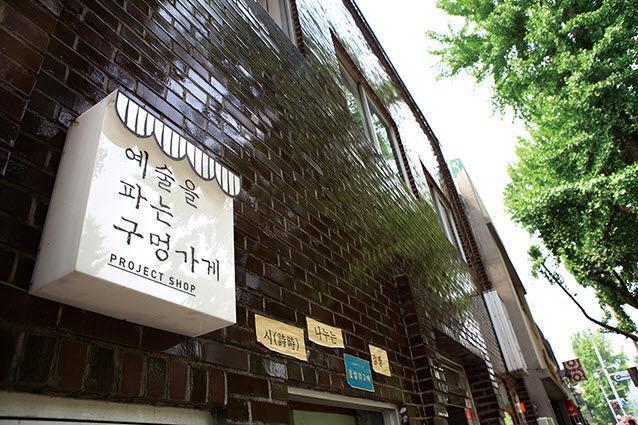








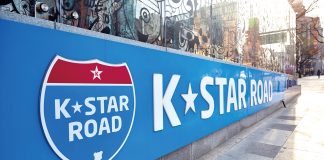

![[A ZONE] Gangnam Food Spot](https://m.dgram.co.kr/wp-content/uploads/2020/09/A존-알래스카3-특성이미지_S-324x160.jpg)
![[A ZONE] Gangnam Life Style](https://m.dgram.co.kr/wp-content/uploads/2020/09/로우클래식1-특성이미지_S-324x160.jpg)





She said she thinks Erving recognized her during that first meeting. I stood in line for an autographed ball, and I didnt really want to. And I got there. I just stood in line to see what he looked like. And I got up there, he asked me if I wanted a ball, and I said `no, and I walked away.